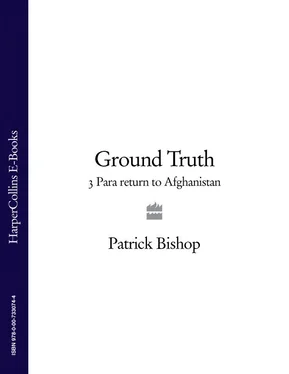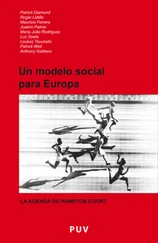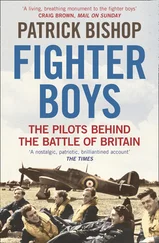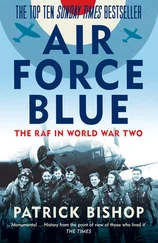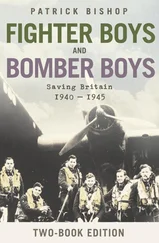Now the Paras were back. Since they had bid a thankful farewell to Helmand in the autumn of 2006, three more British expeditionary forces had arrived, fought for six months, and gone home. In that time another fifty-four soldiers had been killed and scores more seriously wounded. The arrival of 16 Air Assault Brigade in the spring of 2008 put more troops than ever on the ground. They lived in fortresses planted near the main settlements and the rough roads that joined them together. They were squalid places, unsanitary, cramped and uncomfortable. But despite their gimcrack construction they looked as if they were going to be there for a long time.
There was no end in sight to Britain’s Afghan adventure. Even the politicians who had launched the deployment into southern Afghanistan in a cloud of optimism admitted that. In the summer of 2006 the 3 Para Battlegroup had won virtually every encounter they had fought and killed many insurgents. No one knew an exact number but a figure of up to a thousand was mentioned. These were heavy losses for a small guerrilla force, living off the land and among the people. The beatings had forced them to change their tactics of reckless, head-on attacks. But they seemed as determined as ever to keep on fighting. As long as they did so there was little chance that progress would be made with the activity that the government said was the real point of the British deployment. The soldiers were there to make Helmand a better place, by building roads and schools and hospitals, but more importantly by creating an atmosphere free of fear within which Afghans could begin to take charge of their lives.
Looking down from the ridge line towards Route 611, the potholed, rocky track that links the mud villages strung along the Sangin Valley, it seemed to Stuart Hale that morning that, if anything, things had gone backwards since he was last there.
On the day he was wounded, he had decided to descend from the OP and engage the Taliban himself with his sniper rifle, rather than calling in a mortar strike on them. ‘I didn’t want there to be any risk of collateral damage because there were women shopping, kids playing,’ he said. ‘The place was really thriving.’ Now he looked down at the silent compounds, the empty road and the deserted fields. ‘No one wants to live here any more,’ he said sadly. ‘It’s a ghost town.’
The area is called Kajaki Olya. It lies a few kilometres from the Kajaki dam, a giant earthwork that holds back the Helmand river. British troops had been sent to Kajaki in June 2006 to help protect it from attacks by the Taliban. The insurgents saw it as an important prize. Its capture would be a propaganda triumph that would also give them control of the most important piece of infrastructure in the region. The chances of them succeeding were tiny. In the regular squalls of violence that swept Kajaki it was the civilians who suffered most. The number of innocents killed so far in this Afghan war is not known, but it is many more than the combined total of the combatant dead. Soon, living close to Kajaki became too dangerous, even for the farming families whose customary blithe fatalism always impresses Westerners.
But now it seemed that life was about to get better, not only for the people around Kajaki but in towns and villages all over southern Afghanistan. We were waiting for the start of a big operation, the high point of the British Army’s 2008 summer deployment. If it succeeded it would give much-needed support to the claims of the foreign soldiers that they were in Afghanistan to build and not to destroy. 16 Air Assault Brigade was about to attempt to realise a project that had been under consideration for two years. It had been postponed several times on the grounds that it was too dangerous, and probably physically impossible. The plan was to deliver the components for a turbine which, when installed in the dam’s powerhouse, would light up Helmand and carry electricity down to Kandahar to turn the wheels of a hundred new projects. It involved carting the parts on a huge convoy across desert and mountain and through densely planted areas of the ‘Green Zone’ where the Taliban would be lying in wait. The Paras, together with a host of other British and Afghan soldiers, were now gathering in the last days of August, to protect the convoy as it reached Route 611 and the last and most dangerous phase of its epic journey.
Now, as we toiled along the ridgeway that switchbacked up and down the three peaks dominating Kajaki, we could hear the sounds of fighting drifting up from the Green Zone. Our destination was Sparrowhawk West, on top of the most southerly crag. Stu Hale led the way in. The OP gave an eagle’s-eye view of the whole valley, from the desert to the east to the green strip of cultivation, watered by the canals that run off the Helmand river, across to the wall of mountains that rears up on the far bank. A team of watchers has sat there night and day, winter and summer, since the spring of 2006. The operation to clear the way had already begun. Down at the foot of the hill we could see sleeping bags spread out like giant chrysalises in a compound at the side of the 611, which 3 Para’s ‘A’ Company had taken over the night before.
Through the oversized binoculars mounted in the sangars we watched a patrol moving southwards along the road. They were from 2 Para, which manned the Kajaki camp, pushing down towards a line of bunkers known as ‘Flagstaff and Vantage’—the Taliban’s first line of defence. A thin burst of fire drifted up from the valley. ‘That’s coming from Vantage,’ said one of the observers. It was answered immediately by the bass throb of a heavy machine gun, followed by a swishing noise, like the sound of waves lapping the seashore, as .50-cal bullets flowed through the air. 2 Para’s Patrols Platoon, lying up on the high ground overlooking the road to provide protection, were shooting back.
The firing died away. For a while, peace returned to the valley. On the far side of the river there were people in the fields. The bright blue burkas of the women stood out from the grey-green foliage like patches of wild flowers. Then, noiselessly, there was an eruption of white smoke at the foot of the hill, followed by a flat bang. ‘Mortar,’ said someone, and the binoculars turned to the west. We strained our eyes towards a stretch of broken ground on the far side of the river, scattered with patches of dried-up crops and dotted with abandoned-looking compounds. Somewhere in the middle appeared a spurt of flame and a puff of smoke. This time the mortar appeared to be heading in our direction. We ducked into a dugout and it exploded harmlessly a couple of hundred metres away. The Taliban had given themselves away. The trajectory was picked up on a radar scanner and the firing point pinpointed, a compound just under a kilometre off. Then we heard a noise like a giant door slamming coming from the battery of 105mm guns on the far side of the Kajaki dam and the slither of the shells spinning above our heads. There was a brief silence followed by a flash and a deep, dull bang, and a pillar of white smoke stained with pulverised earth climbed out of the fields.
The exhanges went on intermittently for the rest of the morning, settling into a sort of routine in which each hopeful prod by the Taliban rocket-propelled grenades (RPGs) and machine guns was met by a great retaliatory thump from the British mortars and artillery. The silence rolled in quickly to fill the spaces between the explosions. In the middle of the quiet, from high overhead, another sound drifted down, distant and familiar. Miles above, a faint white line was crawling eastwards across the cloudless sky. There were no high-flying bombers on station. The condensation trail came from an airliner, one of the dozens that pass to and fro every day and night, carrying tourists and business people from London and Paris and Rome to Delhi and Singapore and Sydney. It was noon now. The trolleys would be passing along the aisle while the cabin crew offered passengers the choice of beef or chicken. Perhaps, eight kilometres up, someone was looking out of the window at the pinprick flashes and scraps of smoke and wondering what was going on. Down below, in a medieval landscape of mud houses and dirt roads, the violence was petering out. For ten minutes there was no shooting from the Taliban. 3 Para’s Regimental Sergeant Major Morgan ‘Moggy’ Bridge had decided it was a good time to head back down the mountain. Stu Hale took the lead, bounding over the first boulders. The distant drone of the airliner faded away. The only sound was our breathing. It seemed to be all over. Then, after 100 metres, we heard behind us the throb of the Sparrow Hawk .50-cal machine gun opening up and the sound of violence rolled once more over the harsh and beautiful landscape.
Читать дальше
